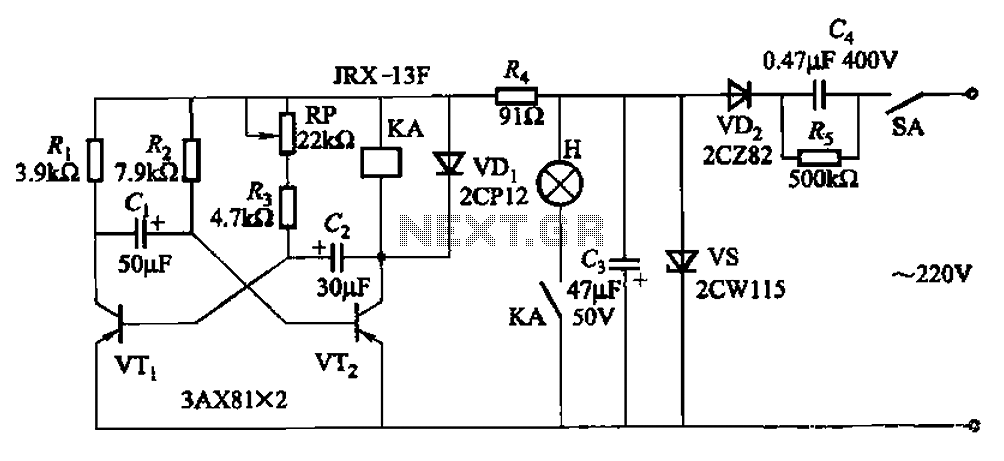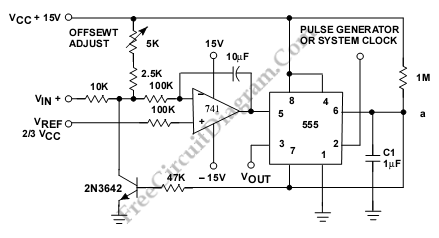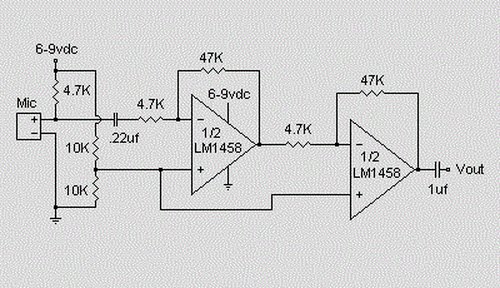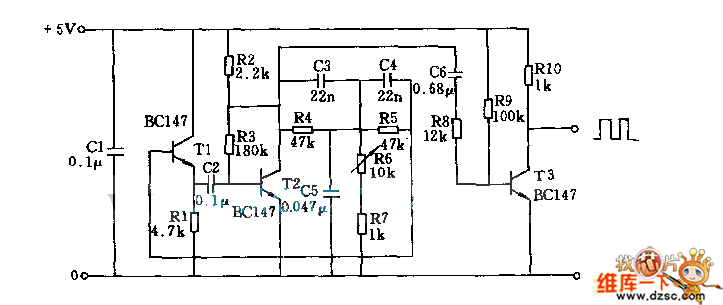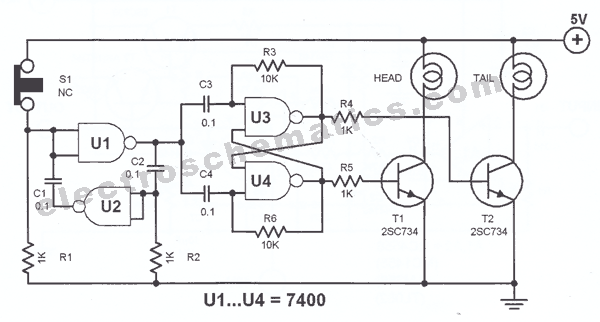
Temperature To Frequency Converter Circuit

In this circuit, an LM34 or LM35 generates a frequency that is proportional to temperature. The reference current (138) is established through resistor R3. The output can be utilized to drive a display, frequency counter, or other indicating devices for temperature readout.
The circuit employs an LM34 or LM35 temperature sensor, which is designed to produce an output voltage that varies linearly with temperature. The key feature of this design is that it converts the temperature measurement into a frequency signal. This frequency output can be directly related to the temperature value, making it suitable for various applications where temperature monitoring is essential.
The reference current, set by resistor R3, plays a critical role in determining the accuracy and stability of the frequency output. By selecting the appropriate value for R3, the desired reference current can be achieved, which in turn influences the frequency range produced by the LM34 or LM35. The output frequency can be calibrated to correspond to specific temperature ranges, allowing for precise temperature readings.
The generated frequency can be interfaced with various devices. For instance, a frequency counter can be connected to measure the output frequency directly, providing a digital readout of the temperature. Alternatively, the output can drive a display, such as an LCD or LED display, which can visually represent the temperature in real-time. Furthermore, this frequency output can be integrated into more complex systems, such as microcontroller-based applications, where additional processing or data logging may be required.
In summary, this circuit effectively transforms temperature readings into a frequency signal, which can be utilized in multiple applications for temperature indication and monitoring. The choice of components, particularly the LM34 or LM35 and the configuration of R3, is vital for achieving the desired performance and accuracy in temperature measurement. In this circuit an LM34 or LM35 produces a frequency proportional to temperature. Reference current (138 ) is set via R3. The output can be used to drive a display, frequency counter, or other indicating device for temperature readout. 🔗 External reference
The circuit employs an LM34 or LM35 temperature sensor, which is designed to produce an output voltage that varies linearly with temperature. The key feature of this design is that it converts the temperature measurement into a frequency signal. This frequency output can be directly related to the temperature value, making it suitable for various applications where temperature monitoring is essential.
The reference current, set by resistor R3, plays a critical role in determining the accuracy and stability of the frequency output. By selecting the appropriate value for R3, the desired reference current can be achieved, which in turn influences the frequency range produced by the LM34 or LM35. The output frequency can be calibrated to correspond to specific temperature ranges, allowing for precise temperature readings.
The generated frequency can be interfaced with various devices. For instance, a frequency counter can be connected to measure the output frequency directly, providing a digital readout of the temperature. Alternatively, the output can drive a display, such as an LCD or LED display, which can visually represent the temperature in real-time. Furthermore, this frequency output can be integrated into more complex systems, such as microcontroller-based applications, where additional processing or data logging may be required.
In summary, this circuit effectively transforms temperature readings into a frequency signal, which can be utilized in multiple applications for temperature indication and monitoring. The choice of components, particularly the LM34 or LM35 and the configuration of R3, is vital for achieving the desired performance and accuracy in temperature measurement. In this circuit an LM34 or LM35 produces a frequency proportional to temperature. Reference current (138 ) is set via R3. The output can be used to drive a display, frequency counter, or other indicating device for temperature readout. 🔗 External reference
